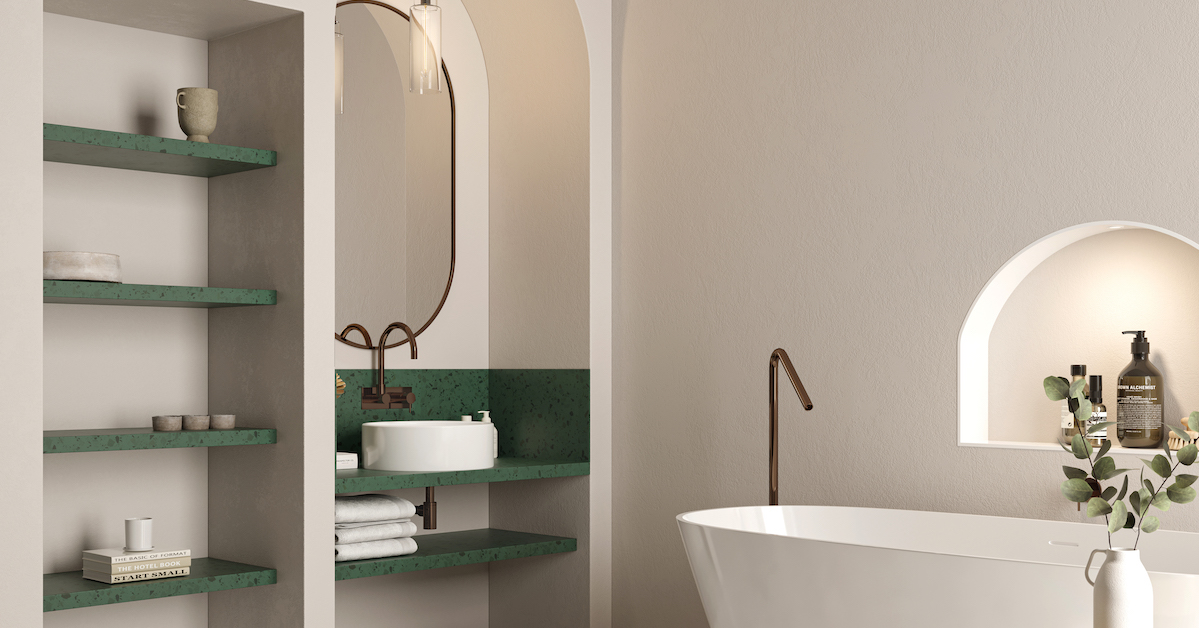For architects and designers, taking some risks and pushing the envelope can lead to a truly one-of-a-kind project.
While making bold choices is all part of your job, so too is ensuring your clients are comfortable and onboard with any designs you’re proposing for their space.
Adelaide design firm studio gram is known for making bold choices and taking risks when it comes to the look of a home, office or hospitality venue.
studio gram is behind the look of some of Australia’s most popular hospitality venues, including Sunny’s Pizza, Surry Hills’ Hotel Harry and Micrology Coffee Roasters in Perth’s Osborne Park area.
They have also designed a slew of homes, including a glamorous villa in the Adelaide suburb of Rose Park and a character home in neighbouring Parkside to name just a few.
If you’re wondering how you can instil trust in your clients to produce cutting-edge, creative and award-winning designs, studio-gram co-founder Dave Bickmore says it’s all down to instilling confidence in your clients that some risks are worth taking.
“We almost try to de-risk it and that’s a large part of our job,” Dave says.
“We want them to feel comfortable parting ways with their money and put their trust in us to make these decisions.
“We want our clients to see that our ideas aren’t just thought up on a whim or us just taking a guess, but are functional and based on strengthening and supporting the design, their brand or some bigger picture.”
Getting the clients onboard
Sometimes, it can be hard to get your clients to embrace creativity if they are looking to play it safe, Dave says. To help win them over, Dave recommends highlighting the value of ‘uniqueness’.
“Clients will come to us for different reasons but if you’re engaging a designer then it’s because you want to do something you can’t do yourself,” Dave says.
“You do get some that come to you with strong opinions, and we don’t have an issue with that, but we do hope they understand we have a strong reputation to deliver good results and that they should trust us.”
Dave usually tries to sell clients on the uniqueness of their work, which is evident in the hospitality venues they have designed.
“If you look at something like Fugazzi versus Osteria Oggi, they are very different in their aesthetic response,” Dave says.
Taking your clients on the journey
At studio gram, clients are involved in the design process from the very early stages to the completion of a project. Dave says this involves the development of a design narrative and writing a short brief about the project.
“If that’s a hospitality venue, we’ll talk about the kind of food and the type of feel that we are trying to develop through the design,” he says.
“If it’s a house, it tends to lean more towards the lifestyle that we’re trying to create with the kind of emotional response that we hope we can evoke through the design.”
Once the initial sketches and mood boards are shown, studio-gram usually has a few roundtable workshops with the clients.
“It’s about working with the client so everyone is a part of that process and on the same journey,” he says.
“Each design decision must come back to the brand and that initial idea that we’re trying to create. This helps instil some confidence that clients are across what we are doing. Then, once we finish the design concept phase, they are completely invested in it.
“They feel like they have taken ownership of that design idea and it’s almost theirs.”
Value of good design
When it comes to the value of good design, Dave says this has a different meaning for every project.
While a well-designed hospitality or hotel project will get people through the doors, it’s a different response when designing homes.
Dave says the value of good design in a house is down to post-occupancy, such as how happy people feel inside the home and whether it changed the way they lived.
“There’s some really beautiful moments that demonstrate how architects can improve the way people live,” Dave says.
“For something like our Rose Park house, one of the family members uses a wheelchair and previously couldn’t get inside the house.
“Through the design process, we instilled some subtle accessible design strategies such as ramps and flush thresholds and wide apertures. To see the client’s daughter in the house on the handover day was a really nice moment.”
Partners in good design
As designers, having access to bold, off-the-shelf products to help achieve your client’s desired look is essential.
Dave says Seima’s bathroom, kitchen and laundry products closely align with their design mantra, which is why they are used heavily throughout their projects.
“They have the ability to kind of deliver with short lead times and we’ve started spec’ing projects with a lot of their newer lines, such as the Arko basin and Plati corner bath.”
The striking textures and bold look of Seima’s products are also popular with clients, Dave says.
“Their design catalogue is very similar to how we approach our projects in that our aesthetic is quite varied and I think that Seima’s range is broad in its design appeal as well.”
Explore Seima’s full range of innovative products for use in your next project.
